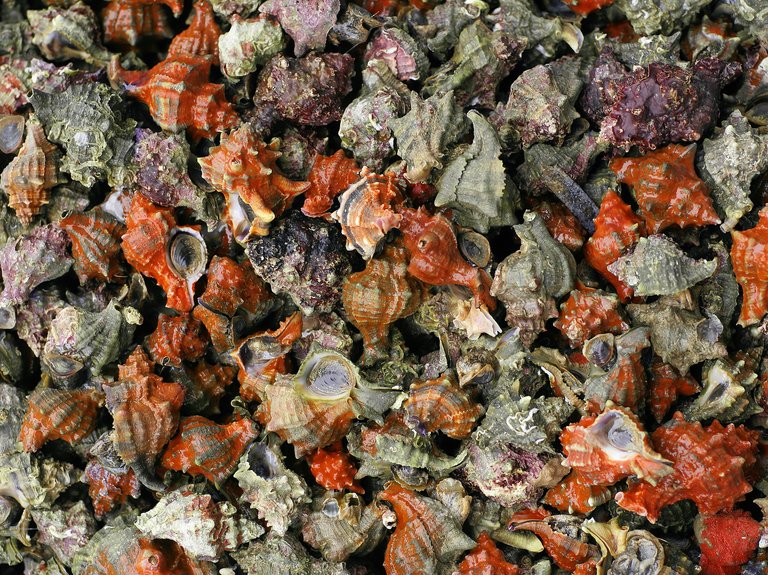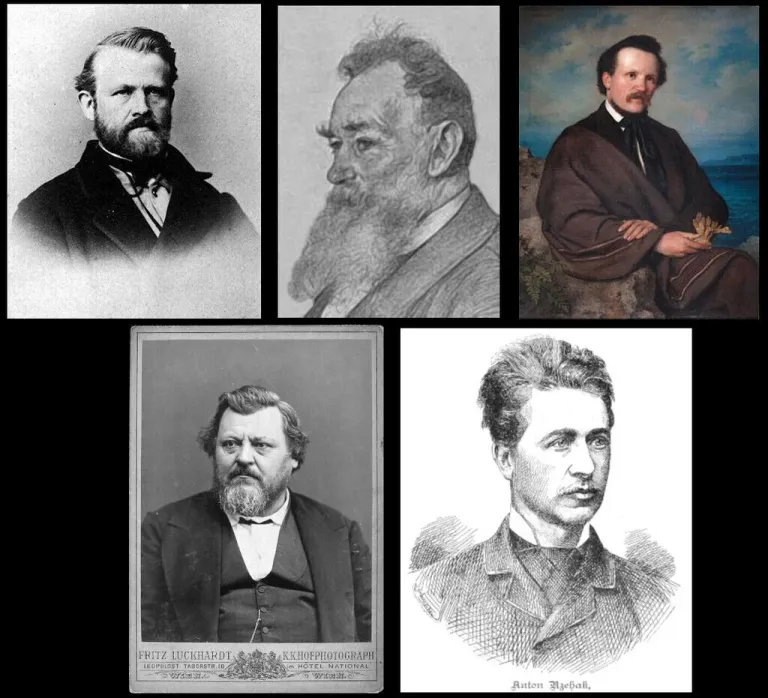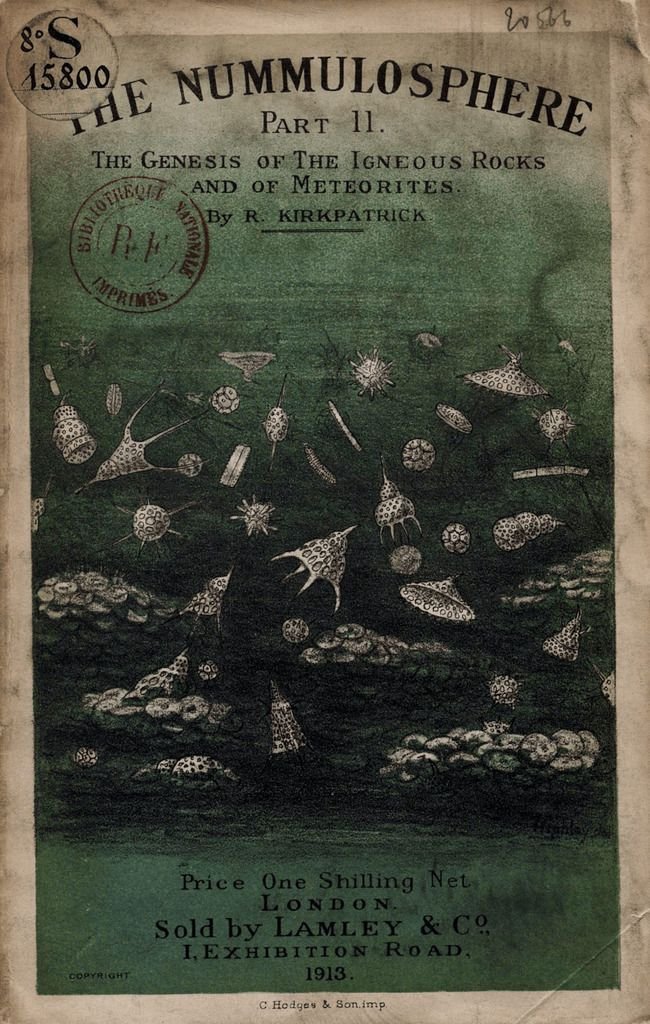
The Purple Snails/Mollusks
Have you ever wondered about the etymology of the word Purple?
Do you know how important this color was to the peoples of antiquity?
Regardless of whether you answered "Yes" or "No" to these questions, the following resources should provide a good introduction and help in your understanding of these questions:
Opusculum de Purpurâ by Fabio Colonna with annotations by Johann D. Major (1675)
Pourpre, by Henri de Blainville (1826)
Mémoire sur la Pourpre, by Henri de Lacaze-Duthiers (1860)
Testa or Tests
After reading the above literature, the following question arose:
Is there a possible connection between the words Testa, Testis and Shell (as in the shell/bone of a marine animal, like ὄστρακον) and the story of Ouranos, which talks of testis (meteorites) falling from the heavens to the sea?
Why Testa or Testis?
From etymology.com, we find the entry on testis with several questionable origins, but this one is the most relevant:
OED (1989), meanwhile, points to Walde's suggestion of a connection between testis and testa "pot, shell, etc."
Now, consider the Myth of the Castration of Ouranos. Let's ask LEO AI to describe it:
In Greek mythology, Ouranos (Οὐρανός) was the Titan god of the Sky and the primordial deity who ruled the universe alongside his wife and sister, Gaia (Γαία), the Earth. However, their children, the Cyclopes and Hekatonkheires, were monstrous and ugly, which displeased Ouranos. As a result, he imprisoned them in Tartarus, the underworld.
Gaia, outraged by her children’s mistreatment, conspired with their sons, the Titans, to overthrow Ouranos. The youngest Titan, Kronos (Κρόνος), was chosen to carry out the deed. With the help of his four brothers, Hyperion, Krios, Iapetus, and Koios, Kronos crept into Ouranos’ bedchamber while he lay with Gaia and castrated him using a flint sickle.
The severed genitals of Ouranos fell into the sea, fertilizing the earth and giving rise to the Erinyes (Furies), the Meliae (ash-tree nymphs), and the Telkhines. From his blood, the Gigantes (Giants) were born. Ouranos’ castration marked the end of his reign and the beginning of the Titan era, with Kronos becoming the new ruler of the universe.
Also recall the following about the meteorites or as they were sometimes called, Baetylia:
A distinct class of holy stones are the so-called βαίτυλοι, or βαιτύλια. The earliest mention of these is in the Phoenician History of Philo of Byblos (died under Hadrian), professedly based upon the native work of Sanchoniathon. In frg. 2, 19 (F. H. G. 3, 568, A), we read, ἐπενόησε θεὸς Οὐρανὸς βαιτύλια, λίθους ἐμψύχους μηχανησάμενος ("Uranos invented baetylia, contriving animated stones"); in the theogony (ibid. frg. 2, 14; F. H. G. 3, 567, B), Uranos and Gē have four sons, --- Ἦλον τὸν καὶ Κρόνον, καὶ Βαίτυλον, καὶ Δαγὼν ὅς ἐστι Σίτων, καὶ Ἄτλαντα. (George Foot Moore. American Journal of Archaeology, Vol. 7, April, 1903.)
Recall the phallic imagery often associated with baetylia and now this connection with the word testis.
Meteorites
Before going further, let's suppose the theories about meteorites posted below are correct. Thus, there exist shells or "the tests/testa of marine animals" in the meteorites, some of which may indeed look like literal testis.
So, could the ancient myths which refer to the castration of Ouranos and the testis that fall from the heavens to the seas be the allegorical representation of the fossiliferous meteorites and panspermia. A way for ancient peoples to explain what they found in the stones falling from the skies.
Do you see how the sea, the purple mollusks and their shells, meteorites, and ancient myth could be connected?
It all comes full circle.
Panspermia involves, indeed requires, the destruction of life and/or worlds to spread the seeds of life, the seeds take root to build new worlds; the construction of continental landmasses then proceed via the hard tests of marine animals, corals, etc...
Marine Organisms in the Meteorites?
Fossils Found in Meteorites Since 1961 | Richard B. Hoover, D.Sc., h.c.
Professor Chandra Wickramasinghe: The Origin of Life (April 3, 1980)."
"Microfossils and Biomolecules in Meteorites," by Dr. R. B. Hoover
https://www.youtube.com/live/nCZDqOrkXb8?feature=share&t=315
1880 - The Meteorite (Chondrite) and its Organisms by Otto Hahn
1881 - Corals in the Meteorites by David F. Weinland
1881 - About the "Organisms of the Meteorite" by Anton Rzehak
1881 - More About the Animal Remains in the Meteorites by David F. Weinland
1881 - Yet Again the "Organisms of the Meteorite" by Anton Rzehak
1881 - The Meteorite and its Organisms by Hermann Karsten
1882 - About the Animal Remains Discovered in the Meteorites by David F. Weinland
1882 - The Alleged Organisms of the Meteorites by Carl Vogt
Can read all about this interesting series here: The Historical Debate on the Chondrites.

In the series entitled: "The Nummulosphere," Randolph Kirkpatrick proposes the theory that the meteorites (and thus certain comets and asteroids) are benthic deposits containing various types of Nummulites.

Read The Nummulosphere Part 1 here
Read The Nummulosphere Part 2 here
Read The Nummulosphere Part 3 here
Read The Nummulosphere Part 4 here
You may have heard of entire time periods of Earth's history defined by coral reefs, did you know there are also periods of time with mollusk reefs?
Congratulations @sagadahoctrott! You have completed the following achievement on the Hive blockchain And have been rewarded with New badge(s)
Your next target is to reach 15000 upvotes.
You can view your badges on your board and compare yourself to others in the Ranking
If you no longer want to receive notifications, reply to this comment with the word
STOPCheck out our last posts: